Review| The Hunger Games: Mockingjay – Part 2
The opening scene of The Hunger Games: Mockingjay – Part 2 begins in almost the same manner as Part 1. Katniss, once again, is confined to the infirmary. She is asked to recite who she is and where she was from. This time, however, she is not in a fragile mental state, but physically broken. After narrowly avoiding death at the hands of her fellow District 12 tribute and star-crossed lover, Peeta Mellark, she is barely able to rasp the words from her bruised and damaged neck. Once again, it is a startling image in sharp contrast to the carefully crafted appearance styled for Katniss in the previous movies by Effie, the Capitol, and now District 13.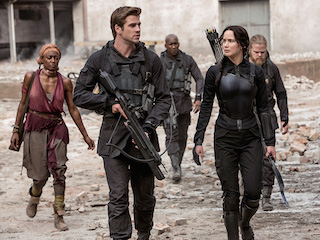
The final installment of The Hunger Games movies is a militaristic march to the heart of Panem, the Capitol city, and the cold, calculating President Snow. With the outcome seemingly never in doubt, Mockingjay – Part 2, from the get-go, is solely focused on the confrontation of Katniss, the hero and face of the resistance against the Capitol and it’s oppressive leader, the aforementioned Snow. Katniss bands together with a small, familiar team, with some new, quickly dispatched faces, to continue shooting propaganda for the District 13 duo of President Alma Coin and former game-maker and Capitol turncoat, Plutarch Heavensbee. Katniss, ever the rebel, hijacks the group to carry out what the movies have been building to: kill Snow.
The martial tone of the movie, filled with a surprising amount of explosions and action, is visually muted in blacks and grays; even the once bright, Romanesque Capitol City has been saturated and was partially filmed in Berlin to give it an industrial, broken feel. It seemed a curious decision to negate all color in a series that has prided itself on vivid costumes and a verdant array of color palettes. However, it does fit the prevailing mood of a more somber, almost elegiac tone of this final chapter.
This may be the most unfortunate weakness of Mockingjay as a whole, but particularly Part 2. I can understand the war-like, below ground dwelling District 13 attire, but the Capitol City should have been a contrasting golden cow of opulence and privileged excess. The only indication we glimpse of the Capitol’s once, former glory is the odd, cat-like friend of Cressida.
It is unclear if the flattening of the distinction between the good guys and bad guys is supposed to be symbolic of Katniss’ reluctance to be the symbolic Mockingjay, once again, or merely a stylistic choice. What is clear, however, is Katniss’ distrust of almost everyone, and her dangerously myopic mission to eliminate Snow. The bruises on her neck serve as evidence of the distrust she has for Peeta and Snow. Her distrust of Coin, however, is muddled and made plain by only one character in one scene. Suddenly, her opinion of Coin turns on a dime—puns, for the win!—and we’re unsure of the virtues of either side. We as the audience are left wondering what happened, where this came from, and why so sudden?
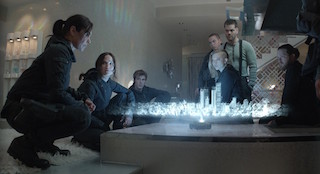 Mockingjay’s failure to give Moore’s portrayal of Coin any shade of nuance and completely missing the ominous tone Collins’ book gives Coin and District 13 is the root problem. Katniss was never at home when she was shuttled there after the quarter quell in Catching Fire and she never trusted Coin. Since it was lacking in Part 1, when it finally crops up in Part 2 it seems unearned and like a stilted post device to move along character arcs. Although the endgame in the final moments is rather shocking and appropriately unexpected, it might leave those who didn’t read the books scratching their collective heads.
Mockingjay’s failure to give Moore’s portrayal of Coin any shade of nuance and completely missing the ominous tone Collins’ book gives Coin and District 13 is the root problem. Katniss was never at home when she was shuttled there after the quarter quell in Catching Fire and she never trusted Coin. Since it was lacking in Part 1, when it finally crops up in Part 2 it seems unearned and like a stilted post device to move along character arcs. Although the endgame in the final moments is rather shocking and appropriately unexpected, it might leave those who didn’t read the books scratching their collective heads.
Flipping the coin around—the puns are officially done, I promise—the strongest positive of Mockingjay- Part 2 ’s of the flattening of both sides of Panem’s conflict is how war affects everyone; both the losers and the winners. Katniss is the symbol and hero of the fight against Snow, yet she is internally traumatized and damaged. Peeta has been used by both sides and is even more profoundly affected by the trauma of the Hunger Games, torture at the hands of the Capitol, and a willing sacrifice in District 13’s plot to subvert the quarter quell. And one particularly tragic event at the conclusion of the movie illustrates the emotional and moral ambiguity of war.
While we root for Peeta and Katniss, fear and trauma have struck those of the Capitol, as well. Fleeting glimpses of Capitol denizens show a population ravaged by war, struck with fear of both Snow and the invading rebels of the Districts and literally caught in the middle of the battle. It appears, especially from these refugees point of view, there are no winners in this war for Panem.
Nor is there a clear hero in Panem. Katniss is not the everyday literary/movie hero. If war affects everyone, the hero, and veteran of many such battles would characteristically be just, if not more, scarred than other soldiers. While the propaganda pieces paint the Mockingjay as an unwavering symbol of resistance and strength, Katniss is truly a psychological and physical mess. She’s bruised, beaten, broken down, conflicted, angry, tired, and sad. She is the reluctant antihero, sharing more similarities to Bruce Wayne than the virtuous Luke Skywalker or Clark Kent.
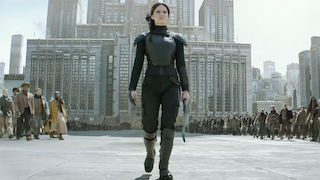 And maybe that is more in line with Collins’ tone than we think. As Christians, we strive to make The Hunger Games reflect aspects of our worldview, and to do so is neither wrong nor naive. However, the worldview of Panem is extremely grim. It lacks much in the way of compassion or empathy, and Mockingjay is the petri dish of its values that trumpet redemptive violence and cold manipulation of people. Katniss may not be the hero that Panem really needs, but, to borrow from another black-clad antihero, she may be the hero Panem deserves.
And maybe that is more in line with Collins’ tone than we think. As Christians, we strive to make The Hunger Games reflect aspects of our worldview, and to do so is neither wrong nor naive. However, the worldview of Panem is extremely grim. It lacks much in the way of compassion or empathy, and Mockingjay is the petri dish of its values that trumpet redemptive violence and cold manipulation of people. Katniss may not be the hero that Panem really needs, but, to borrow from another black-clad antihero, she may be the hero Panem deserves.


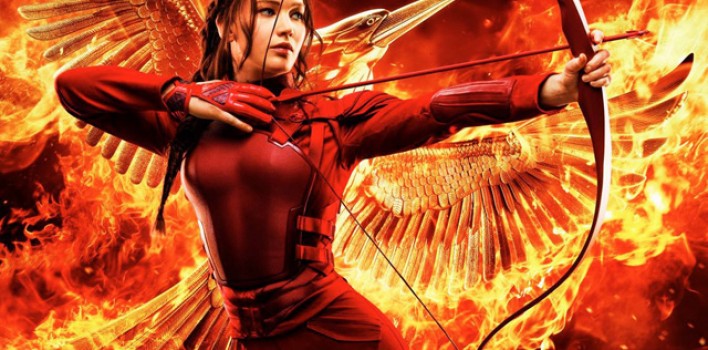
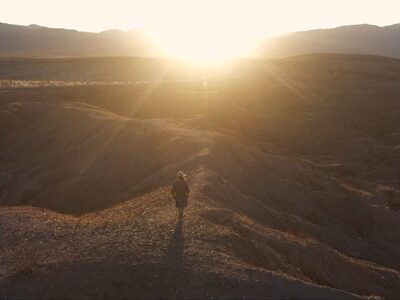
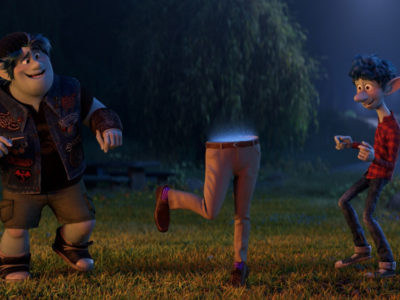
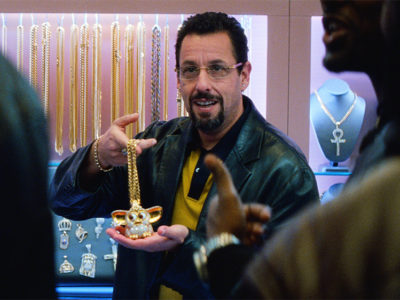


Pingback: #081 – Mockingjay, Pt.2 and the Power of Love | Reel World Theology